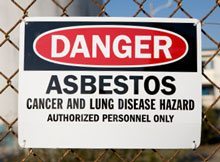A Global Guide to Asbestos Consumption and Ending Mesothelioma
 The World Health Organization (WHO) is working to end asbestos-related diseases, including mesothelioma. This means the end of asbestos use and consumption.
The World Health Organization (WHO) is working to end asbestos-related diseases, including mesothelioma. This means the end of asbestos use and consumption.
New data shows the association between deaths from mesothelioma and asbestos consumption. Ecological studies play an important part in public health policy. The new Australian publication provides updated numbers about mesothelioma populations around the world.
What We Knew About Mesothelioma and Asbestos 15 Years Ago
A 2007 report provided clear evidence about the connection between asbestos and mesothelioma. But since that first report, only a few countries have implemented asbestos bans. Many developing countries continue to consume asbestos.
Asbestos is a naturally occurring mineral that has been found throughout the world. It was once called the “magic mineral” because of its seemingly magical properties. All these properties pale in comparison to the fact that asbestos is toxic and cancer-causing for human beings. Asbestos causes mesothelioma and other asbestos-related diseases.
In the last 15 years, more global data on this important connection have been collected. This includes countries that had not reported data before.
Compared with the 2007 study, the ecological associations remained consistent for mesothelioma. Asbestos consumption is a highly significant positive predictor for all mesothelioma types.
What We Know Today
The connection between asbestos consumption and mesothelioma is true in every country. Countries with little historical asbestos consumption experienced very low levels of mesothelioma. But mortality rates still increase exponentially relative to asbestos exposure.
The evidence is clear. But there are many countries still not heeding the call to stop using asbestos. This is especially true for many developing countries.
More ecological studies can provide evidence to impact government policy. These new data can help policymakers understand the health-related phenomenon.
The data published in Environmental Health Perspectives provides asbestos consumption per capita data. But this data does not distinguish between asbestos fiber types. It does provide a large database for global asbestos consumption and asbestos-related disease.
In the past 15 years, countries have been slow to adopt new asbestos bans. The global population at risk for mesothelioma remains very high. Public health policy is hoping for the ultimate goal of a global asbestos ban. This goal warrants reinforcement from various perspectives.
Source:
Rath, Emma M., Man Lee Yuen, Chimed-Ochir Odgerel, Ro-Ting Lin, Matthew Soeberg, Anna K. Nowak, and Ken Takahashi. “The ecological association between asbestos consumption and asbestos-related diseases 15 years later.” Environmental Health Perspectives 130, no. 5 (2022): 057703. https://doi.org/10.1289/EHP11148





